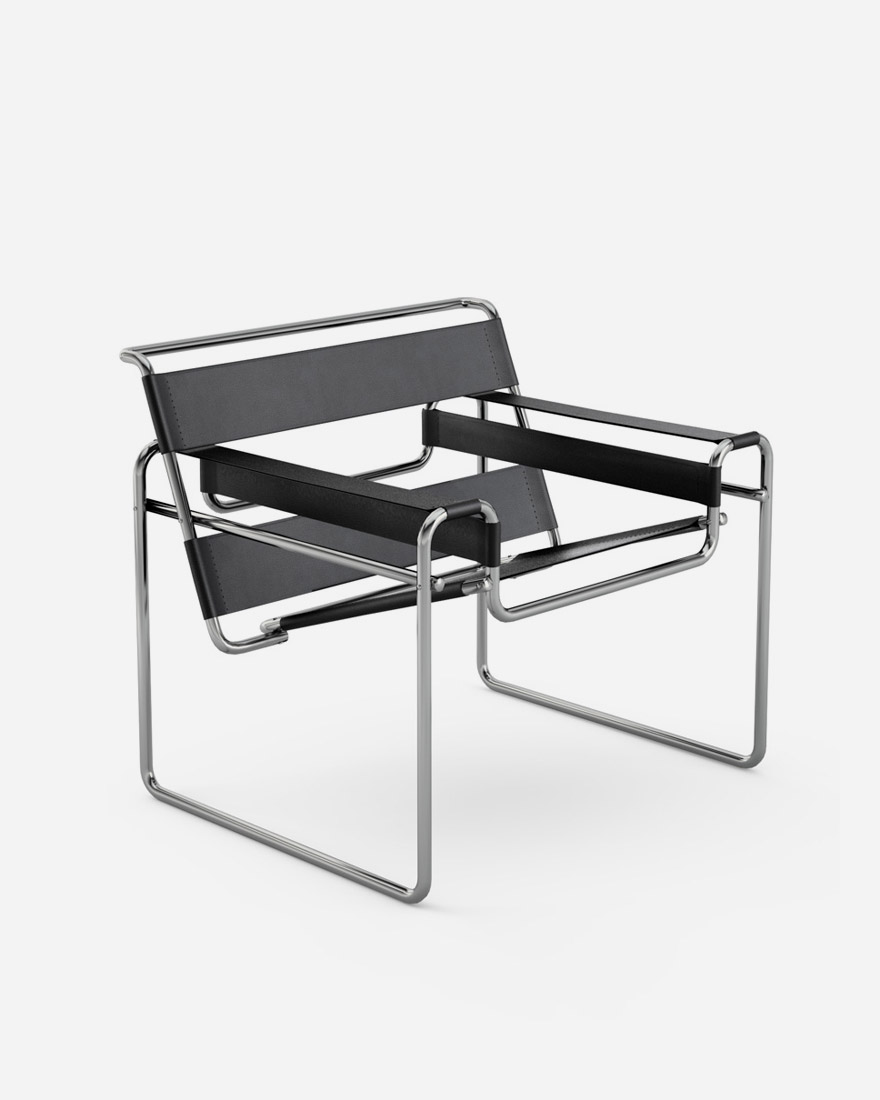In the world of design, there are many objects that have stood the test of time and are still appreciated by many design lovers today. In this new series, we turn our attention to timeless classics of product design and the stories behind them. One of these is the Wassily™ Chair, which has enjoyed renewed popularity, especially in recent years.
Actually called Model B3, the chair is an unprecedented combination of aesthetics, design, and functionality. With its clean lines, harmonious proportions, and exceptional materials, the B3 revolutionized the world of furniture design back then. The chair was designed in 1925 by Hungarian architect and designer Marcel Breuer. He was a student at the renowned Bauhaus School in Germany at that time and later a teacher.
The creation of the B3 is closely intertwined with the bicycle, as Marcel Breuer shared in an interview with a Knoll historian: As a young architect of only 23 years, Breuer was fascinated by the perfection of bicycle design, which had hardly changed over time. This observation led him to consider that steel tubing could also provide an ideal basis for furniture design.1 Inspired by the technique of bending steel tubes, similar to the way bicycle handlebars are made, Breuer began experimenting. Through these experiments, he discovered further potential in the bending of the steel tube, so he decided to fully exploit this technique.

The chair should embody the principles of lightness, practicality, and simplicity. The result was a minimalist chair made of chromed steel tubes and leather straps that formed the seat and backrest. They made it stable and comfortable at the same time. A distinctive feature was the way the steel tubes are bent – without welding points, so they could be chromed and assembled in parts.
At first, Breuer was afraid of criticism1, after all, the use of steel tubes represented a radical departure from traditional workmanship in furniture design. Wassily Kandinsky, who was also working at the Bauhaus at the time, suddenly came into Breuer’s studio and was immediately impressed by the new type of chair.1 A year later, the entire Bauhaus was furnished with it, as it embodied the principles of the school. This revolutionized 1920s design and laid the foundation for a love of modern minimalist aesthetics that continues to this day.
Then in the 1960s, when the Italian furniture manufacturer Gavina revived the design, the B3 chair was renamed in memory and honor of Kandinsky, who was so enthusiastic about the chair at that time.
The Wassily was so new. People had jumped on it at an exhibition to destroy it. They thought the whole world was going to end now with this furniture.
Marcel Breuer via Wright2
The Wassily™ Chair has inspired generations of designers and is considered a pioneer of several relevant designs of the 20th century. With it, Marcel Breuer brought the design-oriented “New Objectivity” (Neue Sachlichkeit) not only into living rooms but also into the consciousness of a broader public. Exploring new possibilities in furniture making, Breuer designed a chair that was not only minimal, functional, and aesthetically pleasing, but also one of the first representatives of a new way of design.
The rediscovery of the Wassily™ Chair in the 1960s and its renaming manifested its timeless appeal and influence on modern design. No wonder, then, that the Wassily™ Chair has been appreciated by design lovers and collectors alike for nearly 100 years.
If you want to purchase the chair, you can do this directly via Knoll.


